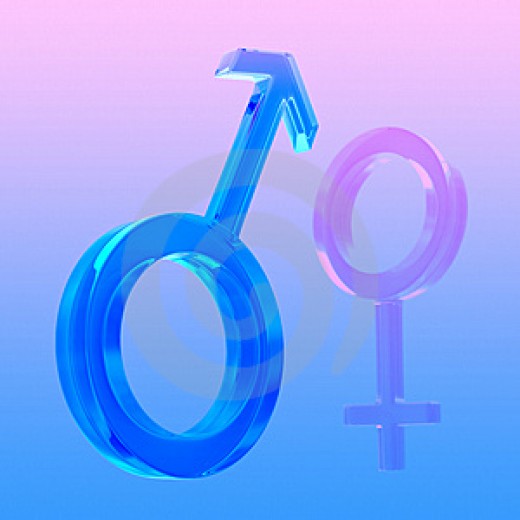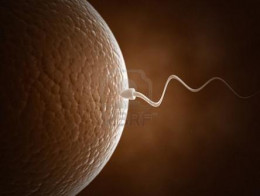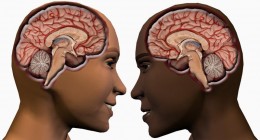Socio-psychological Source of Gender
One of many of the cherished versions of the beginnings of humanity declares that God, in His justice and mercy, formed a man to inhabit the earth He organized.
The man formed out of the earth, from the elements of the earth, and given the very image of God had no companion among the animals of the new world God organized.
God caused a deep sleep to fall upon the man, named Adam, and took from the man’s side a rib to form a woman to be a companion and help-meet, Eve. Together Adam the man and Eve, the woman, received instruction to replenish the earth and have joy in their posterity.

From this, and many conceptualizations or dogmas of similar construction, humanity formed gender roles that helped to shape societies and build the human race.
Of particular note, of most societies, the roles of gender seem to have somewhat of a universal gender dichotomy to support a social structure of the male as the most intelligent, strongest, largest, and superior of the genders.
Research evidences that generally males are stronger and larger than the typical female in humanity—even more ambitious overall comparing the sexes. Biological women, however, are NOT intellectually inferior to biological men.
Did God declare the gender differences so that men could rule over women because women differ physiologically from men?
Are the biological differences God introduced merely physical and humanity itself added the gender-specific behavior?
Those questions may need revelation from God to answer! An exploration of the interaction of hormones and behavior will provide a perspective on gender identity and the gravity to which biological psychology and environmental influences affect gender identification.

Source

Source
Genetic Truth
In order to understand sex differences, it is important to understand how sex develops. All human life begins in the form of a single cell. In order for human life to begin, a male sperm and a female egg unite.
The male sperm contains 23 chromosomes and the female egg has the same number. When the gametes unite, the two become one—combining the genetic information from both sexes into a new organism.
Of the 46 chromosomes that combine, only one of those differentiates the sex of the new human life. The sperm has either an XX chromosome combination, representative of the female sex, or the XY combination to represent the male gender. The male carries the genetic information to determine the gender of the new life.
Sex preparation does not cease with conception. Crucial hormonal changes occur to help masculinize or femininize the new life form to develop the proper organs for either the male or female gender. Anderson Wickens states in his text Foundations of Biological Psychology that
the normal sexual development of the fetus depends on the differentiation of the gonads into testes or ovaries to provide the necessary hormonal environment for the internal and external sex organs to develop.1
The next stage of development occurs because of the development of the gonads, either male testes or female ovaries. The gonads release particular hormones to determine the proper development of masculine or feminine qualities for the new life.
The two hormones, testosterone, and Müllerian duct-inhibiting substance determine whether the fetus will develop a penis or a vagina. The presence of the testosterone hormone triggers the male organ to develop, but the lack of testosterone provides the opportunity for the female organ to develop.
At times, the natural and normal function of sexual development (due to whatever circumstance) does not occur. Sometimes the hormones necessitating a male occur when a female egg is present or vice versa. In those cases, a male may develop the outer organs of a female or vice versa for the female. Though they occur infrequently, it is necessary to note that it occurs.

Source
Nurture and Nature
After birth and the beginnings of maturity, gender behavior develops that places the child into a sex trait category of either more masculine or feminine. Boys tend to develop into more “boyish behavior,” such as rough and tumble play.
Girls tend to move towards “girlish behavior,” such as sitting quietly and playing with dolls. According to the research findings of Servin et al, the control group of girls that did not have Congenital Adrenal Hyperplasia, tend to play more with gender-neutral or feminine gender-related toys and show the same behavior, while the girls with the extreme case of Congenital Adrenal Hyperplasia used the neutral or masculine targeted toys and behavior.
Now, this does not provide exclusive proof that all boys are aggressive and such, but it does give the perspective that certain behaviors have an association with a particular sex depending on its cross-cultural frequency with those behavioral patterns.
It so happens that in boys it is rough-play and in girls, it is soft-play that gender-specific roles have developed. The finding that even girls can also exhibit masculine behavior without the presence of a disorder also begs that masculine and feminine behavior is not limited to one gender or the other.
It seems that genetic disposition and hormonal development work together to produce an individual that has a high probability if he is a boy to exhibit behaviors common to boys. On the other hand, if she is a girl, behaviors common to most girls. Additionally, cultural characterization of the genders incorporates the biological tendencies to create the ideal psychological boy or girl.
In “Exotic Becomes Erotic: A Developmental Theory of Sexual Orientation,” the study shows that most of those who participated in the study did not attribute their sexual orientation to marginalization as youths by other youth groups.
Whatever other factors awakened the disposition towards same-sex attraction had some other attribution. However, the study did reveal that most boys that preferred to do activities most associated with girls had a high percentage rate among homosexual men and a lower among heterosexual men. The study suggested the findings are similar with women. This does n suggest homosexuals all have a biological disorder but to notes, of the group surveyed, there may be a small correlation between early childhood behaviors that determines gender-specific behavior in adulthood. A masculine woman may still marry a man and be heterosexual but not exhibit normative female gender traits.
Gender Cannot Be Legislated AWAY From Sex
In the psychological realm, GENDER does not equal SEX--male or female. Gender is a cultural construct that happens to associate certain characteristics masculine or feminine but does not necessarily represent a person's sex or sexual orientation or gender orientation.
Sexual Orientation is a person's copulative desire towards either a male or a female.
Gender Orientation is a person's attraction towards social behavior and appearance--male-related cultural behavior or female-related cultural behavior. For example, a man may be attracted to other men sexually but may prefer men who have gender behavior normally associated with women. A woman may find men attractive sexually, but prefer gender behavior associated with women also! The short of it all: Gender defines sex socially, but legally no legislation can change a person's sex or gender because he or she lives outside of normal gender roles. Since gender and sex are linked socially, socially, gender is arbitrary. Gender is synonymous with sex and should not be psychologically interpreted.
- Transgender "girl" in Comox Valley seeking legislative change - Comox Valley Record
According to B.C. law, people must have sexual reassignment surgery before they can change their sex designation on their birth certificate. Dickens notes Ontario laws now allow a person's sex designation to be changed without surgery, after a Human
Sexual Orientation is a person copulative desire towards either a male or a female.
Gender Orientation is a person's attraction towards social behavior and appearance--male-related cultural behavior or female related cultural behavior.
Reference Material
Foundations of biopsychology Andrew P. Wickens. Edition, 2. Publisher, Pearson, Prentice Hall, 2005. Original from, Cornell University (Wickens, 2005, pg. 205)1
Law and Medicine, Gender Should Be
Definitive
Gender is a word that describes an individual's sex, male or female. Males are males, even if the behavior is feminine or the genitalia are deformed. Females also are genetically female regardless of hormonal changes.
Genetics and environment both play roles in the behavior of the sexes. Naturally, children born with biological advantages toward masculine and feminine behavior will develop and adjust to cultural norms for their specific gender.
Biology does influence gender behavior but does not determine how a specific gender, male or female, may behave. Other factors contribute to the development biologically and environmentally to shape behavior.
The word gender should not be mutilated to be ambiguous about the sexes. Gender orientation better describes what some dictionaries are trying to redefine the word gender alone to mean, and it seems that social media and politicians agree with changing the meaning of gender.
Various nations, regarding gender, recognize transgendered men and women as legally a different sex than what is etched in the genetic sequences of their bodies. Nature dictates gender, which cannot be changed by mutilating the genitalia until it resembles the opposite gender. The marker of either XX or XY determines gender. Legislation cannot change the guided evolution of the human genome.
Resources Referenced
Parker, Walter (Seems no longer available) Foundations of Biological Psychology
No comments:
Post a Comment